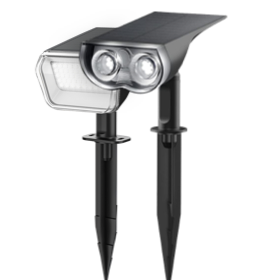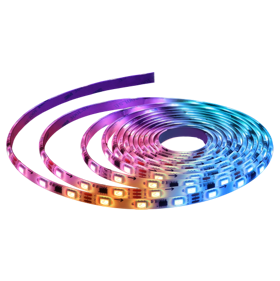Fluorescent Lights: Your Complete Guide to Energy Efficiency, Replacement & Modern Alternatives
In This Article:
- How Fluorescent Lights Work
- Fluorescent vs. Incandescent: A Detailed Comparison
- Pros and Cons of Fluorescent Lighting
- Fluorescent Light Maintenance: Troubleshooting Common Issues
- Best Uses for Fluorescent Fixtures
- LED vs. Fluorescent: Why Modern Homes Are Switching
- FAQs
Fluorescent lighting has been a cornerstone of energy-efficient illumination for decades, widely used in homes, offices, and industrial spaces. While its bright, cost-effective glow remains popular, advancements in LED technology—including versatile options like LED tube lights and Room LED lights tailored for kitchens, living areas, and workspaces—have reshaped the lighting landscape. Today, homeowners and businesses can choose from different lightbulb types to match specific needs: from the nostalgic charm of incandescent to the futuristic efficiency of smart-enabled systems.
This guide explores how fluorescent lights work, their strengths and weaknesses, and actionable solutions for common issues. We’ll also uncover why modern alternatives like LED tube lights are redefining convenience and sustainability. Whether you’re troubleshooting flickering fixtures or weighing eco-friendly upgrades, this guide illuminates the path to smarter, safer lighting.

How Fluorescent Lights Work
Fluorescent lighting stands out for its unique ability to convert electrical energy into bright, efficient illumination—a process far more complex than traditional incandescent bulbs. At its core, this technology relies on a carefully orchestrated dance between chemistry and physics. Below, we break down the science behind fluorescent bulbs and explore the key components that make them a staple in commercial and residential settings.
The Science of Fluorescent Illumination
Fluorescent lighting transforms electrical energy into visible light through three key stages:
Mercury Vapor Activation:
Electricity ionizes mercury vapor and argon gas inside the tube, creating plasma that emits ultraviolet (UV) light.
Phosphor Conversion:
The tube’s phosphor coating absorbs UV light and re-emits it as visible light, with color temperature adjusted via the phosphor blend.
Ballast Regulation:
Modern electronic ballasts stabilize current flow, eliminating flicker and extending bulb lifespan.
Why It Matters: This process allows fluorescent lights to use 75% less energy than incandescent bulbs while producing far less heat.
Key Variants of Fluorescent Lights
Not all fluorescent bulbs are created equal. Different designs cater to specific environments, from sprawling warehouses to cozy living rooms. Here’s a closer look at the most common types:
Tube Lights (T5, T8, T12)
- Design: Linear tubes ranging from 2–8 feet in length, identified by diameter (e.g., T8 = 1-inch diameter).
- Applications:
- T5: Slim, high-efficiency tubes ideal for modern offices and retail displays.
- T8: The gold standard for warehouses and garages, offering 30% better efficiency than older T12 models.
- T12: Largely phased out due to high energy consumption but still found in older installations.
Compact Fluorescent Lamps (CFLs)
- Design: Twisted or spiral-shaped bulbs that fit standard incandescent sockets.
- Applications: Perfect for households seeking energy savings without rewiring. Best suited for table lamps, ceiling fixtures, and room LED lightsalternatives in areas like kitchens and hallways.
- Drawback: Slow warm-up time (1–3 minutes) in cold environments.
Penda flour Lamps
- Design: Specialty fixtures with robust construction for extreme conditions.
- Applications: Industrial settings like factories, parking garages, and outdoor signage where durability and high lumen output are critical.
- Unique Feature: Often paired with shatter-resistant coatings and high-output ballasts.
Did You Know? Retrofitting T12 fixtures with T8 LED tubes can slash energy costs by up to 50% while maintaining brightness.
Fluorescent vs. Incandescent: A Detailed Comparison
Choosing between fluorescent lights and incandescent bulbs hinges on balancing energy efficiency, aesthetics, and costs. While fluorescent lights dominate commercial spaces for their energy savings, incandescent bulbs remain beloved for their warm glow. Here’s how these different lightbulb types compare:
|
Factor |
Fluorescent |
Incandescent |
|
Energy Efficiency |
4–6x more efficient |
10% efficiency (90% heat loss) |
|
Lifespan |
Up to 10,000 hours |
750–1,000 hours |
|
Light Quality |
Cool white, harsh for some settings |
Warm, natural glow |
|
Cost |
Higher upfront, lower long-term |
Cheap upfront, costly over time |
Takeaway: While fluorescent lights excel in energy savings and longevity but lack warmth. For cozy spaces, consider LED retrofits as a modern middle ground.
Pros and Cons of Fluorescent Lighting
Fluorescent lighting offers energy-saving benefits but comes with trade-offs. Here’s a concise breakdown for homeowners and businesses, whether upgrading a fluorescent kitchen fixture or installing fluorescent shop lights:
Advantages of Fluorescent Lighting
Energy Efficiency:
Fluorescent bulbs use 75% less energy than traditional incandescent bulbs, making them ideal for high-usage areas like offices, warehouses, and retail spaces. This translates to significant long-term savings on electricity bills.
Superior Brightness:
The cool, bright light emitted by fluorescents minimizes shadows, enhancing visibility for tasks like cooking under fluorescent kitchen fixtures or repairing machinery in workshops with fluorescent shop lights.
Cost-Effective for Large Spaces:
With lifespans of up to 10,000 hours, fluorescent systems reduce replacement frequency and labor costs in commercial settings.
Drawbacks of Fluorescent Lighting
Mercury Hazard:
Fluorescent bulbs contain trace amounts of mercury, requiring careful disposal to prevent environmental harm. Always recycle through certified programs.
Flickering and Humming:
Aging ballasts or faulty starters can cause flickering, which strains eyes and signals impending bulb failure. Upgrading to electronic ballasts or LED retrofits resolves this issue.
Cold Sensitivity:
Fluorescents struggle to start in temperatures below 50°F, making them unreliable for unheated garages or outdoor fixtures in winter.
Case Study: Warehouse Efficiency Upgrade
A 2023 retrofit of a 10,000 sq. ft. warehouse saw T12 fluorescent tubes replaced with energy efficient T8 models. The results?
- 40% reductionin energy consumption.
- 25% dropin annual maintenance costs due to longer bulb life.
- Improved light uniformity, reducing workplace accidents.
Fluorescent Light Maintenance: Troubleshooting Common Issues
Fluorescent lighting thrives in environments demanding bright, reliable illumination. Whether optimizing fluorescent kitchen fixtures for shadow-free cooking or powering fluorescent shop lights in high-traffic workshops, these fixtures excel were precision and energy efficiency matter most. Below, we break down their top applications—proving why they remain a staple in both homes and industrial spaces.
Problem 1: Flickering Lights
Causes:
- Faulty Ballast: Aging magnetic ballasts struggle to regulate current.
- Loose Wiring: Poor connections disrupt power flow.
- Dying Bulbs: End-of-life tubes flicker inconsistently.
Solutions:
- Reseat the Tube: Turn off power, rotate the bulb 90 degrees to ensure proper contact.
- Replace the Starter: Swap out the starter (a small cylindrical component near the bulb) if flickering persists.
- Upgrade to an Electronic Ballast: Modern ballasts eliminate flicker and hum while boosting efficiency.
- Switch to LED Retrofits: Bypass ballast issues entirely with LED tube lights, which offer instant, stable illumination.
Pro Tip: Flickering in cold environments? Use cold-rated fluorescent bulbs or transition to LED shop lights for reliable performance.
Problem 2: Buzzing or Humming
Causes:
- Magnetic Ballasts: Older models vibrate at 60 Hz, creating audible noise.
- Loose Fixture Components: Screws or panels may rattle during operation.
Solutions:
- Tighten Fixture Screws: Secure loose covers or mounting brackets.
- Install Electronic Ballasts: These silent replacements eliminate hum and improve energy efficiency.
- Adopt LED Tubes: LED retrofitsoperate without ballasts, eradicating noise at the source.
Did You Know? Humming ballasts waste up to 15% of energy as heat. Upgrading saves both noise and costs.
Problem 3: Slow Start in Cold Weather
Causes:
- Mercury Activation Issues: Low temperatures hinder mercury vaporization.
- Outdated Ballasts: Magnetic ballasts struggle in sub-50°F conditions.
Solutions:
- Use Cold-Rated Bulbs: Look for "cold weather" fluorescent tubes designed for garages or outdoor fixtures.
- Install LED Shop Lights: LEDs ignite instantly in freezing temperatures, making them ideal for unheated spaces.
- Add Insulation: Shield fixtures from drafts to maintain a stable operating temperature.
Case Study: A Minnesota auto shop replaced flickering T12 fluorescents with LED tube lights, reducing startup time from 2 minutes to instantaneous—even at -10°F.
Proactive Maintenance Tips
- Clean Fixtures Every 6 Months: Dust and grime on bulbs or reflectors can reduce brightness by up to 20%. Use a microfiber cloth and mild cleaner.
- Inspect Wiring Annually: Frayed wires or corroded connections pose fire risks.
- Monitor Ballast Health: Replace discolored or swollen ballasts immediately.
Featured Product: Linkind A19 Matter Smart CCT Bulb
Tired of flickering fluorescents and cold-weather headaches? Linkind A19 Matter Smart CCT Bulb offers a bulletproof solution. These bulbs ditch fragile tubes and mercury for sleek, app-controlled brilliance that works flawlessly in any environment.
Why They Outperform:
- Flicker-Free Forever: No more humming ballasts or dying starters. Tunable white light (2,700K–6,500K) adapts from cozy sunsets to crisp daylight—no warm-up time.
- Smart Savings: Use 85% less energy than fluorescents and track usage via the AiDot app. At 25,000 hours, you’ll forget what a burnt-out bulb looks like.
- Matter-Ready: Sync with your existing smart home setup for automated schedules. Leave the garage? Lights auto-off, saving energy without lifting a finger.
Ideal For: Garages, workshops, or spaces were reliability and efficiency matter most.

-
Reliable Dual-Mode Connectivity: Linkind matter smart bulbs use Wi-Fi & Bluetooth for stable control, auto-reconnecting in 5s after outages for seamless lighting.
-
Matter-Compatible: Full Matter support lets you control lights via Apple, Google, Amazon & SmartThings from one platform. Set schedules & scenes without app-switching.
-
Tunable White with Smart Dimming: Set 2,700K–6,500K lighting & dim 1–100%. Control via AiDot app, voice commands, or Matter for the perfect ambiance.
Note: These bulbs are not compatible with traditional dimmer switches.
-
Smart Schedules & Preset Scenes: Automate on/off times & choose preset scenes for effortless ambiance, enhancing your seamless smart home experience.
-
Premium and Energy Efficient: Linkind LED bulbs use 85% less energy, last 25,000 hours & let you monitor usage via AiDot app for smart savings.
Best Uses for Fluorescent Fixtures
Fluorescent lighting excels in spaces needing bright, reliable, and energy-efficient illumination. Ideal for large areas requiring shadow-free precision—think kitchens for meal prep or commercial workspaces demanding productivity—these fixtures balance performance and cost. Below, we highlight their top applications.
Kitchens: Precision Lighting for Culinary Tasks
Fluorescent kitchen fixtures equipped with slim T5 tubes provide shadow-free illumination, ensuring every chop, slice, and simmer is performed under optimal conditions.
- Why T5: These tubes offer high lumen output in compact designs, perfect for under-cabinet lighting or recessed ceiling fixtures.
- Pro Tip: Pair with diffusers to soften glare while maintaining task-ready brightness.

Workshops: Accurate Color Matching for DIY Projects
In workshops and garages, fluorescent shop lights with high CRI (Color Rendering Index) ratings ensure true-to-life color accuracy—critical for painting, woodworking, or mechanical repairs.
- Recommended Setup: T8 fixtures with electronic ballasts eliminate flicker, reducing eye strain during long projects.
- Case Study: A 2023 survey found mechanics using high-CRI fluorescents reported 30% fewer errors in part identification.

Retail Stores: Glare-Free Product Highlighting
T5HO (High Output) tube lights are a staple in retail environments, delivering intense yet glare-free illumination to showcase merchandise.
- Application: Install above display racks or in track lighting to accentuate textures and colors without overheating delicate items.
- Energy Bonus: T5HO bulbs use 10% less energy than traditional halogen spotlights.

Offices: Reducing Eye Strain in Open Spaces
Long T8 fluorescent bulbs are a cost-effective choice for offices, providing uniform light that minimizes harsh shadows and screen glare.
- Layout Tip: Combine with indirect lighting (e.g., suspended fixtures) to create a balanced, fatigue-free workspace.
- Upgrade Path: Replace aging T12 fixtures with T8 models for 30% energy savings and improved light quality.

Featured Product: Linkind BR30 Matter Smart RGBTW Bulb
Fluorescent shop lights had their moment, but Linkind BR30 Smart Bulbs redefine industrial-grade lighting. With 1,600 lumens of vivid, energy-smart brilliance, these bulbs turn harsh workspaces into vibrant, eye-friendly hubs.
Why They Dominate:
- Workshop Warrior: 100W equivalent brightness (14W energy use) illuminates every corner of your garage or studio. Gentle 60Hz flicker-free light reduces eye strain during long projects.
- Sync & Conquer: Music-reactive modes make DIY projects feel like a concert—tools in hand, lights in sync.
- Built to Last: 2-year warranty and 25,000-hour lifespan outlive fluorescents 3-to-1.
Best In: Workshops, studios, or anywhere you need rugged performance with a creative edge.

-
Uninterrupted Smart Lighting Control: Dual Wi-Fi/Bluetooth technology ensures always-on performance. 5-second reconnection after outages keeps your smart lighting responsive anywhere.
-
Matter Smart Home: Matter compatibility connects with Apple, Google, Amazon & SmartThings from one platform. Control all smart lighting without switching apps.
-
Dynamic Music-Reactive Lighting: Transform spaces with synchronized or multi-color async modes that pulse perfectly to your music's beat for immersive audio-visual experiences.
-
Customizable Atmosphere Creator: Choose from 104 preset modes and 16 million colors to set perfect ambiance for movies, gaming or relaxation with just a tap in the app.
-
High-Quality Assurance: Linkind BR30 smart matter light bulbs last up to 2500 hours a day and offer 2 years warranty, energy-saving 8W equivalent to a 65W incandescent bulb, and are designed with a gentle 60Hz frequency to minimize visual fatigue and promote eye comfort.
LED vs. Fluorescent: Why Modern Homes Are Switching
LED tube lights are replacing fluorescents, offering unmatched benefits like cost savings and smart-home integration. Whether upgrading fluorescent kitchen fixtures or retrofitting workshops, LEDs outperform fluorescents in efficiency, lifespan, and versatility. Below, we break down their advantages and compare them side-by-side.

Why LED Lighting Outshines Fluorescent
LEDs are transformative, replacing fragile fluorescents (with mercury vapor and glass tubes) through energy efficiency, durability, and versatility. Their rugged solid-state design thrives in harsh conditions while slashing energy costs—making them ideal for modern homes and businesses. Here’s how they’re transforming modern spaces:
Energy Savings:
LEDs consume 80% less energy than fluorescent bulbs, reducing electricity costs by hundreds of dollars annually in high-usage areas like kitchens or garages.
Eco-Friendly Design:
With zero mercury and fully recyclable materials, LEDs eliminate the environmental hazards associated with fluorescent disposal.
Smart Features:
Adjust color temperature from warm to cool white via smartphone apps or voice commands (e.g., Alexa or Google Home). Pair with motion sensors or daylight-harvesting systems for automated efficiency. Matter light bulbs take this a step further, offering seamless integration with cross-brand smart home ecosystems—ensuring your lighting works effortlessly with Apple HomeKit, Amazon Alexa, and Google Nest.
LED vs. Fluorescent: A Side-by-Side Comparison
To quantify why LEDs are winning the lighting race, let’s examine critical performance metrics:
|
Feature |
LED |
Fluorescent |
|
Lifespan |
25,000–50,000 hours |
7,000–15,000 hours |
|
Cold Performance |
Instant start in -22°F |
Struggles below 50°F |
|
Upfront Cost |
$15–$30 per tube |
$5–$10 per tube |
|
10–20 watts (60W equivalent) |
10–20 watts (60W equivalent) |
14–24 watts (60W equivalent) |
Key Takeaway: While fluorescent tubes have lower upfront costs, LEDs dominate in longevity and operational savings. For example, a $20 LED tube lasting 50,000 hours outperforms six $8 fluorescent replacements over the same period—saving $28 in bulb costs alone.
Pro Tip: Retrofitting Made Simple
Don’t let existing fluorescent fixtures hold you back. LED retrofits allow you to:
Bypass Ballasts: Direct-wire LED tubes eliminate ballast failures, a common fluorescent pain point.
Cut Energy Bills: A typical garage with 10 fluorescent tubes can save $150+ annually by switching to LEDs.
Enjoy Instant Light: No more waiting for bulbs to warm up in cold garages or workshops.
Case Study: A family in Colorado replaced their 12-tube fluorescent garage setup with LEDs, reducing monthly energy costs by $18 and achieving full brightness in sub-zero winters.
Featured Product: Linkind A19 Matter Smart RGBTW Bulb
Imagine lighting that dances to your playlist, syncs with your morning routine, and adapts to every mood—Linkind A19 Matter Smart RGBTW Bulb turns this vision into reality. Designed for the modern smart home, these bulbs blend cutting-edge technology with artistic versatility, making them the ultimate upgrade from outdated fluorescents.
Why They Shine:
- fUnbreakable Connection: Dual Wi-Fi/Bluetooth ensures your lights stay online, even during outages—no more “smart” devices acting dumb.
- Matter Magic: Control every bulb across Apple, Google, Amazon, and Samsung ecosystems without juggling apps. Movie night? Say “Dim the lights” to Alexa while your Apple HomeKit sets the scene.
- Cinematic Beats: Sync lights to music in two modes—unified pulses for parties or a rainbow wave that reacts to every note. Bonus: 104 preset scenes turn gaming marathons into neon adventures.
- True-to-Life Hues: With CRI 90+, your midnight snack under warm 1,800K light won’t make your leftovers look like a horror movie prop.
Perfect For: Living rooms, home theaters, or anywhere you crave ambiance that’s as dynamic as you are.

-
Seamless & Stable Connectivity: Linkind smart bulbs feature dual Wi-Fi/Bluetooth for reliable control anywhere. Wi-Fi enables remote access; Bluetooth serves as backup. Quick 5-second reconnection after outages.
-
Matter-Enabled: Matter-compatible bulbs work with Apple, Google, Amazon & Samsung ecosystems. Control all from one app—schedule, dim, and create scenes easily.
-
Sync Lights to Music: Transform spaces with two sync modes—synchronized for uniform beat-matching or asynchronous for multi-color displays that respond independently to music.
-
Scene Modes: 104 presets and 16 million colors give complete creative control. Personalize any space with one tap for movies, gaming, or relaxation.
-
True-to-Life Colors: CRI 90+ ensures rich, natural tones. Adjust from warm 1,800K to crisp 6,500K daylight, or explore endless color options for any mood.
Featured Product: Linkind Matter Smart RGBTW Bulb
When sheer brightness meets smart artistry, Linkind 1600-Lumen Smart Bulb steals the spotlight. Designed for grand spaces and bold statements, this powerhouse bulb replaces outdated high-wattage fluorescents with dazzling, energy-smart illumination.
Why It’s Revolutionary:
- Brilliance Unleashed: 1600 lumens (100W equivalent) bathes large rooms, galleries, or event spaces in vibrant light—all while sipping just 14W of energy.
- Matter-Enabled Mastery: Integrate effortlessly with Apple, Google, or Alexa ecosystems. Hosting a party? Sync every bulb to thumping basslines or set a golden glow for VIP arrivals.
- Color Scientist’s Dream: 16 million hues and tunable white light (1,800K–6,500K) let you paint walls with light—no brush required. CRI 90+ ensures your art collection or decor pops with true-to-life vibrancy.
- Voice Command Wizardry: Adjust brightness, switch scenes, or trigger color cycles with a simple command. “Hey Google, turn the living room into a disco”—done.
Perfect For: Lofts, event venues, or anywhere you demand jaw-dropping light that’s as smart as it is bright.

-
Matter-Enabled Compatibility: Integrate seamlessly with Apple Home, Alexa, Google Home, or AiDot using Matter-enabled devices—no need for multiple apps.
-
Powerful Illumination: Illuminate large spaces with 1600 lumens (100W equivalent) from Linkind smart light bulbs, while saving energy with only 14W consumption.
-
Voice Control: Control your smart bulbs with voice commands via Alexa, Apple Home, or Google Home for easy brightness and color adjustments.
-
Music Sync & Preset Scenes: Sync lights to music and choose from preset scenes like Party or Calm using the AiDot App for dynamic lighting effects.
-
16 Million Colors & Tunable White: Choose from 16 million colors and adjustable white light with high CRI for accurate color display and tailored lighting (1800K warm to 6500K cool).
Conclusion
Fluorescent lighting remains a viable option for specific applications, but its environmental drawbacks and performance limitations make LED tube lights the clear choice for modern homes and businesses. With innovations like Matter light bulbs, which unify smart home compatibility across platforms, the future of lighting is brighter, greener, and smarter. By embracing LEDs and emerging technologies, you’ll not only reduce energy bills but also join a growing movement toward sustainable, interconnected living spaces.
FAQs
Q: Are fluorescent tube lights energy efficient?
A: Yes—they use 75% less energy than incandescent bulbs, but LEDs are 30–50% more efficient.
Q: How do I replace a fluorescent tube light bulb?
A: Turn off power, rotate the bulb 90 degrees, slide it out, and insert a new one. Wear gloves to avoid oil residue.
Q: Can I use fluorescent lights outdoors?
A: Only with weatherproof fixtures. For better cold performance, choose LED alternatives.
Q: What are long light bulbs called?
A: These are typically T8 or T12 tube lights, ranging from 2–8 feet in length.







































